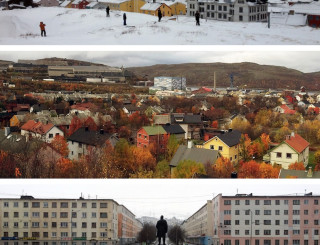
This dissertation is a cultural landscape mapping project, merging ethnography with urban planning and design to provide robust and relevant contextual data to inform those interested in a socially mediated urban future for Arctic communities. Design anthropology provides a framework for this pursuit, as it combines the tools from each parent discipline into a more well-rounded temporal and spatial practice. The approach bridges the enrichening human-focused aspects of ethnography with the future-oriented imagining of design practice at the scale of the landscape and the Arctic city.
The research concerns an Arctic borderland where Norway, Russia and Finland meet, centred on the town of Kirkenes in Sør-Varanger municipality, Norway. The transnational character of the location provides great diversity in possible cultural landscape readings. Further, the Arctic is highly vulnerable to climate changes and therefore acts as an extra dimension to the investigation. How do locals collectively make and perceive their world, and what are their aspirations for the future? How does the presence of international borders affect this cultural landscape? Is there anything particular about this Arctic location that contributes to the local sense of place and envisioned potential?
This ethnographic project accounts for voices in the border region and how local imaginings reveal distinct elements of what contemporaneously constitutes the cultural landscape. The pieces come together as a glimpse of continued everyday future-making in the border region. The work was also an ephemeral forum for sharing aspirations for the future. All stakeholders – citizens, architects, planners, urban designers, and politicians alike – could benefit from increased depth and clarity on local ideas and perspectives on Arctic urban futures and the paths used to negotiate and operate within these landscapes

